 |
SpeakerTalk
This forum has been set up to facilitate discussion of 1970s KEF speakers and drive units. The owner of the Forum has no connection with KEF Audio.
|
| View previous topic :: View next topic |
| Author |
Message |
Nimo_jon
Intermediate Contributor 25+

Joined: 21 Feb 2011
Posts: 48
Location: Singapore
|
 Posted: Mon Sep 10, 2018 3:33 pm Post subject: KEF 104aB rebuild with MiniDSP and Dayton drivers Posted: Mon Sep 10, 2018 3:33 pm Post subject: KEF 104aB rebuild with MiniDSP and Dayton drivers |
 |
|
KEF 104aB rebuild with MiniDSP and Dayton drivers
In 2011 I rebuilt a very old pair of KEF104 into KEF104ab using premium coils and caps (see my old post [URL="http://www.diyaudio.com/forums/multi-way/189530-kef-104-kef-104ab-mkii-spice.html"]KEF 104 to KEF 104aB mkII with SPICE[/URL] ). The crossover was rebuilt with Mundoff and Jentzen parts. I done a lot of careful tuning by listening. I did not have the facilities or equipment to do any measurements. The premium passive parts did not give a quantum leap from the original KEF104 crossover, but the HF are more comfortable. The pair of upgraded KEF 104ab served as a good nice living room speakers for many years. Things were not too demanding, the speakers were great for easy listening. The very same pair of KEF 104ab are still serving me well today.

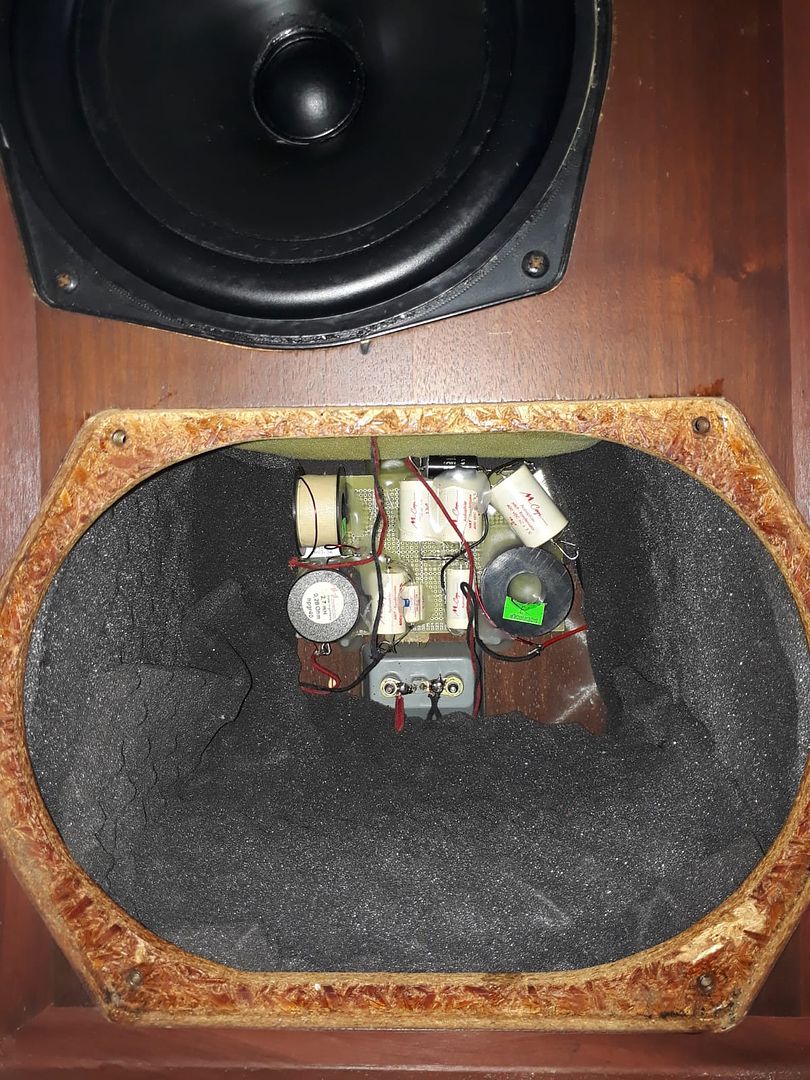
In 2012, I walked passed a shop in Singapore and saw a very old pair of KEF 104ab on display. The seller asked for US$500 for the pair. I had a listen and thought there were something wrong with the sound. I left the shop without any deal. Two years later in 2013, I saw the same pair of KEF 104ab still sitting in the shop. This time, the seller asked for US$200. Just for parts and repair. I examine the speakers and thought it was a fair deal. I brought the speakers home. Sadly, I later found that one of the KEF T27 was not working well ( the coil was burned and repair by adding a thin wire). One of the cabinets was apparently damaged by moisture or partially soaked in water. I dismantled the drivers completely and checked the damage. Only one of the T27 was bad. The cross overs, B200 SP1039 pair, and the B139 SP1024 were in pretty good shape. While removing the drivers, part of the chip wood came of with drivers. It was really bad.
I later picked up a pair of new old stock KEF T27 from England, and also a pair of used B200 to rebuild the KEF 104ab. Due to work commitments, I did not have time and had to shelf the project.. I done some cabinet repair, but then I stopped the project. I even forgotten I had the pair sitting in the store room for a good number of years.
THE CABINET
This year 2018 things have gotten better for me and I have more spare time. I dug up the old KEF 104ab cabinet from my store room and decided to work on it. What I have done a good many years ago remain. The cabinet has got rid of all the moisture that nearly destroyed it.

The chip wood near the recess for T27 and B200 was in terrible shape. Some of the portions simply turned into power and I had to rework with high quality wood putty, with a lot of sanding down and checking accuracy; and repeated severals. The most painful part of this restoration was the cabinet. The chip board are just bad! I did not want to rebuild with new wood, as the cabinet is afterall from 1975, it carries a lot of history with it.
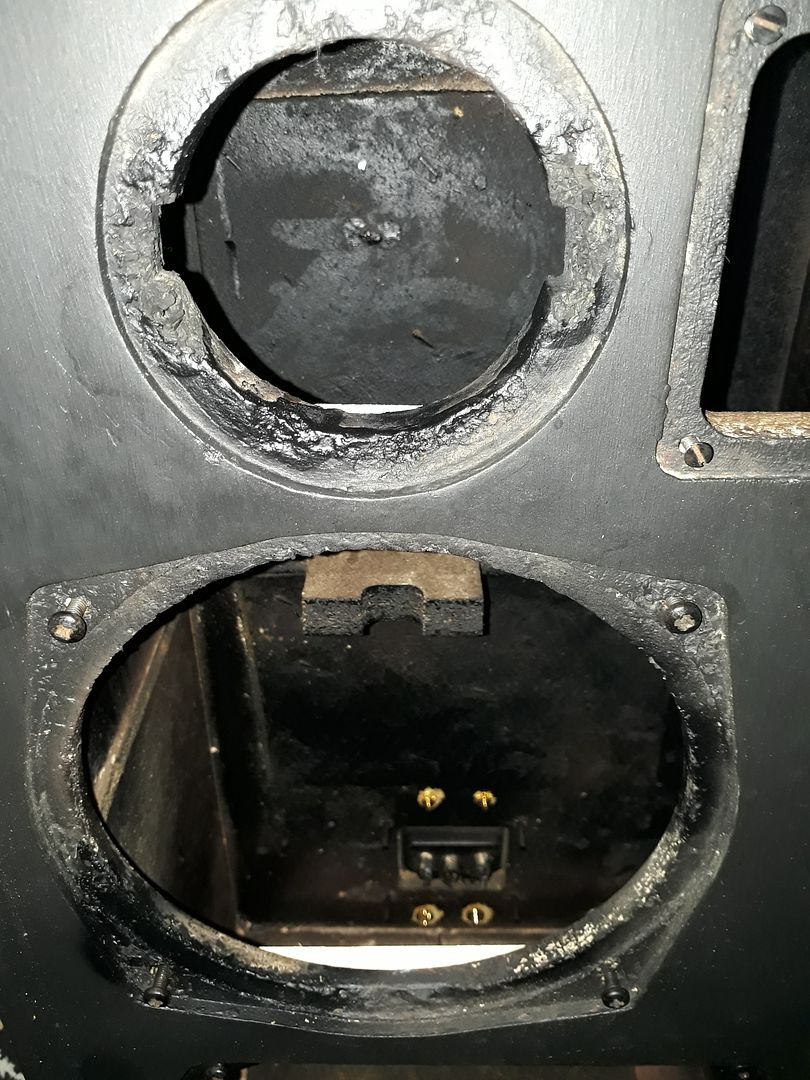
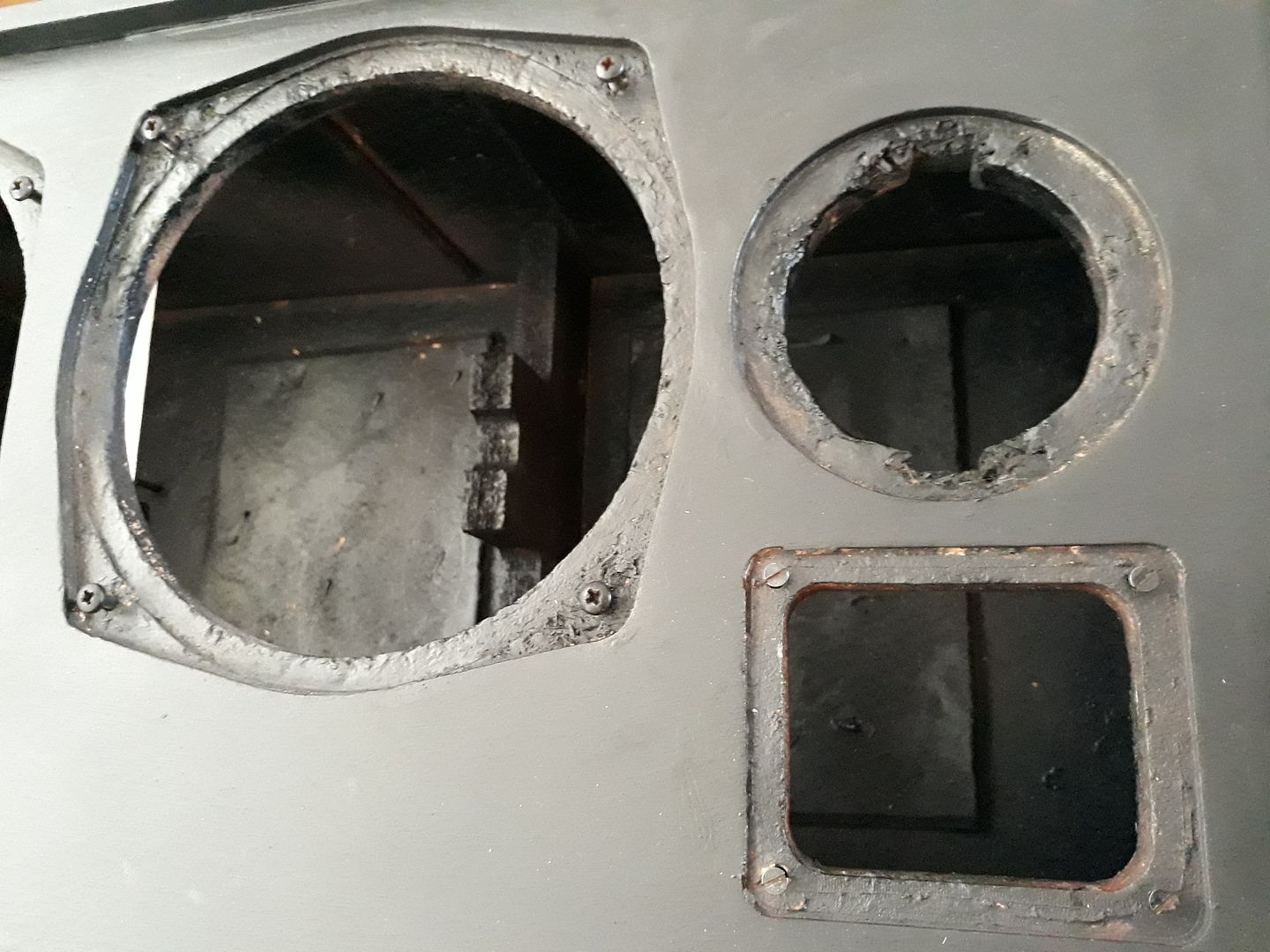
With the help from a carpenter friend, I had the cabinet squared, sanded down, painted with wood glue and paint. The plan was to rebuild the speakers like the old KEF Kit 104ab with black face.

I applied two layers of wood coat and also sprayed painted the interior to prevent moisture attack. The original bitumen paddings were also fixed with wood glue. The cabinets finally have a new set of real wood veneer professionally applied. I planned to have the crossover reworked, drivers check and setup the speakers for the option of active crossover. I even had a 3khz BW active crossover built.
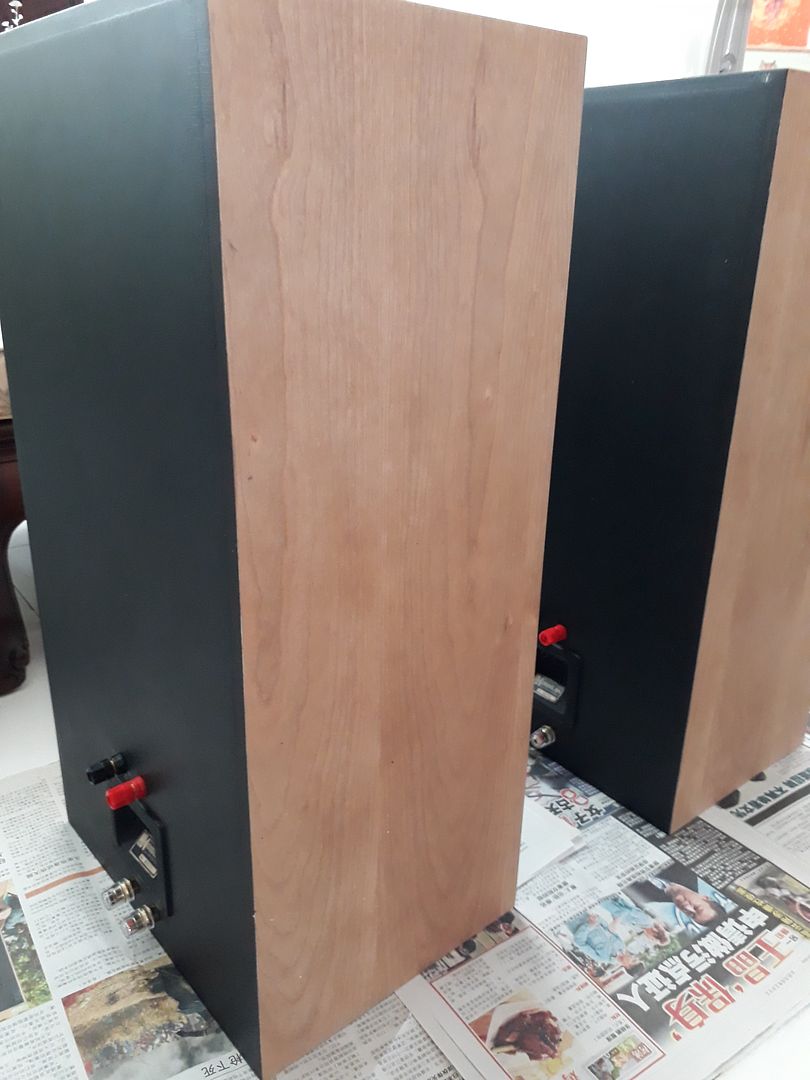
Active crossover using op amps with gain adjustment. This was set at LW4 setting.
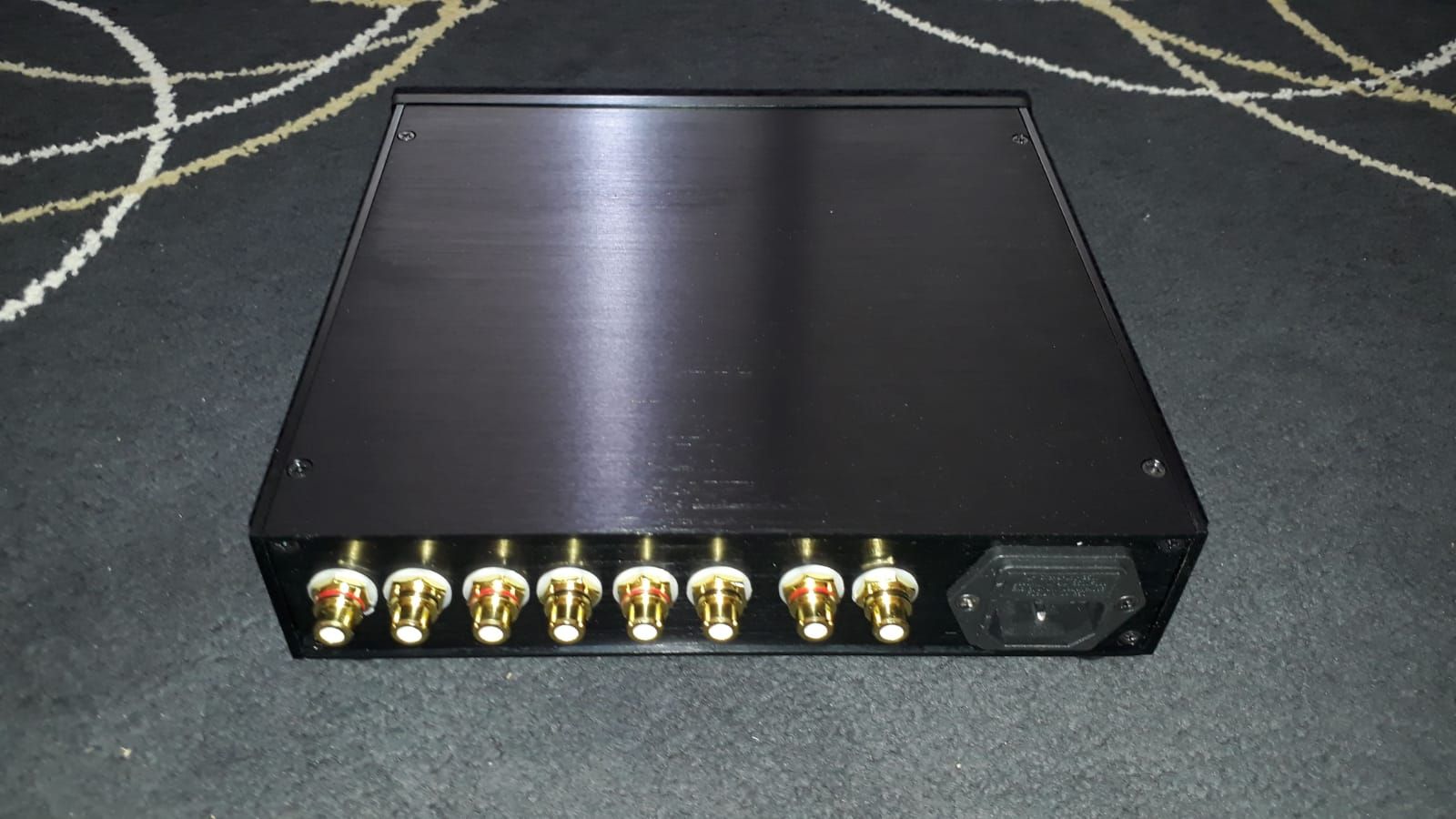
When everything was in place, I found that after years of storage the KEF B200 curtains disintegrated! It took me months to look for spare curtains and someone to repair the cones professionally. I was supplied with wrong curtains from an American seller, and they refused to take returns. Finally, I found an Ebay seller in China who could supply the curtains. (OD 197mm, 185mm-142mm for the curved up area, and 125mm dia to cover the cone edge). I have no way to determine if the compliance of the rubber skirt matches the original KEF spec. The original KEF curtains are thinner and softer by feel.

The repaired KEF B200 SP1039 did not meet my expectations. Only 1 out of the 6 drivers may work well by listening, and the rest have different problems. It is very difficult to find used B200 in 2018, as compared to 2011 period. This ran into a deadlock.
Simulation using *Vistaon/Monacor drivers to emulate KEF B200
I later looked for replacement drivers like Visaton 8 in, Monacor SPM225, and the Peerless classic 8in. From the graphs, they all have their own characteristics, and may not match the B200 SP1039. I even ran several Visaton Boxsim simulations to emulate the B200 with these drivers. I was guessing all the time with no confirmation of results. I have to buy the drivers to confirm the results. The simulated curve was all over the place.
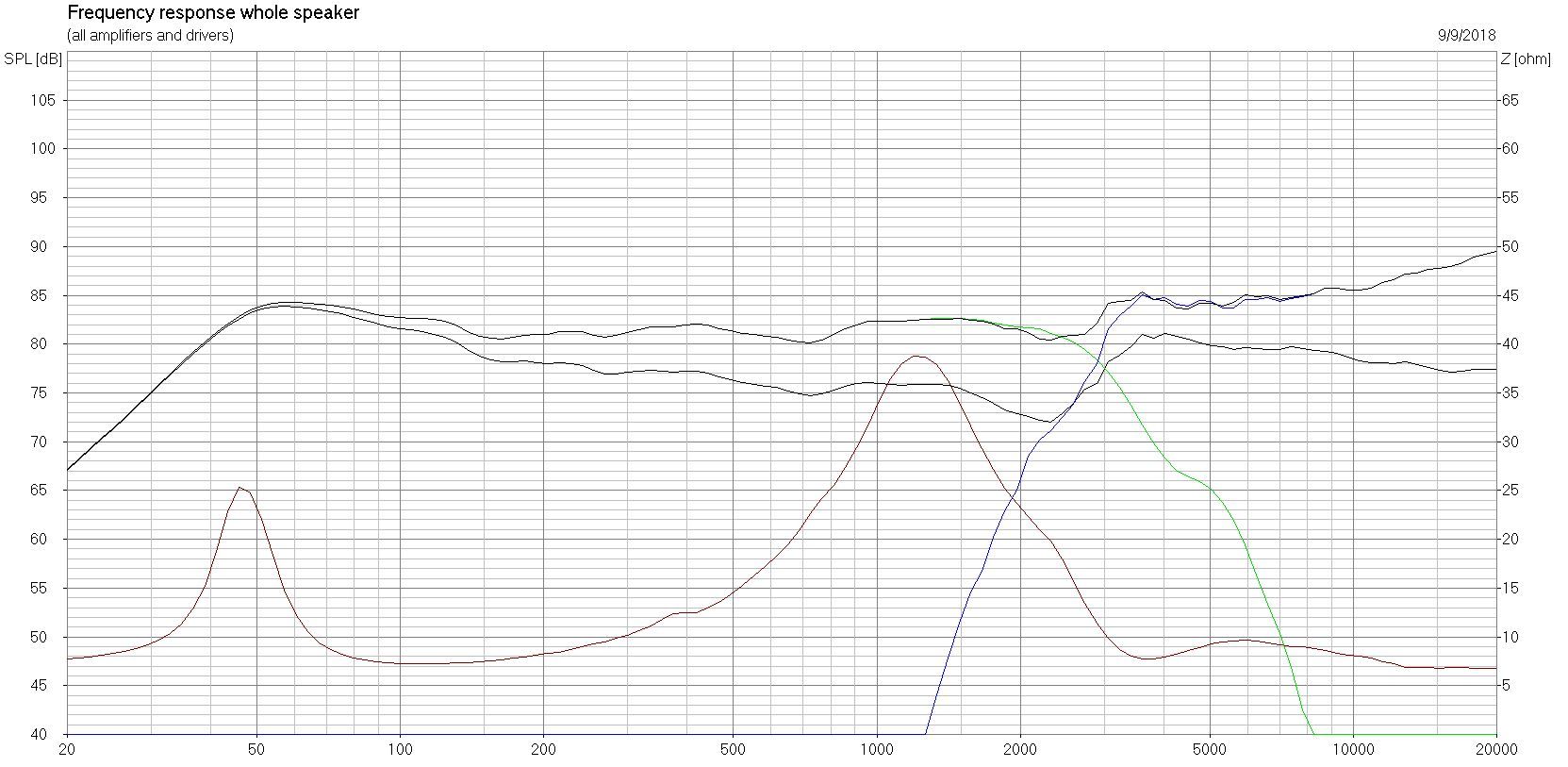
The B200 has a hefty magnet and is capable of fairly high music power handling. The problematic part is it has a Pincushioned cutout that many modern drivers do not adopt. And those which has a Pincushioned footprint does not match the B200, those are mostly replacement speakers for old TV. I ran into a big problem. I am not going to have my project to wait for a good pair of B200 to appear. ( Falcon may introduce the new B200 , maybe in 2019).
Finally, I decided to use a modern 8in driver to replace the B200. After much considerations, I decided to use the Dayton RS225P. Wait a minute, that is American, paper cone and very different animal from the B200. The Qt for the RS225P is low at 0.34. This maybe the most important parameter to look at, because the KEF 104ab has a big ABR the B139.
I have no idea how the B200 extends in the frequency range from 1khz. Many 8 inch cones show break ups at 3khz anyway.
The Dayton RS225P has a cut out of 184mm. It should be able to fit into the KEF cabinet in place of the B200.
I have read a lot of good reviews of the Dayton RS225 (alu cone) with the old RS28 tweeter. I later heard a pair of Dayton DIY using Mark K’s crossover and was very impressed. The passive components cost more than drivers itself. This is no longer the KEF 3rd order Butterworth design. The crossover have to cater for the Dayton characteristics and cut off rapidly at near 1.5khz both sides. The simulation using Boxsim (with Dayton’s FR and phase data) looks terrible (but the speaker sounded ok from the DIY pair I heard, it even had cut corner crossover)
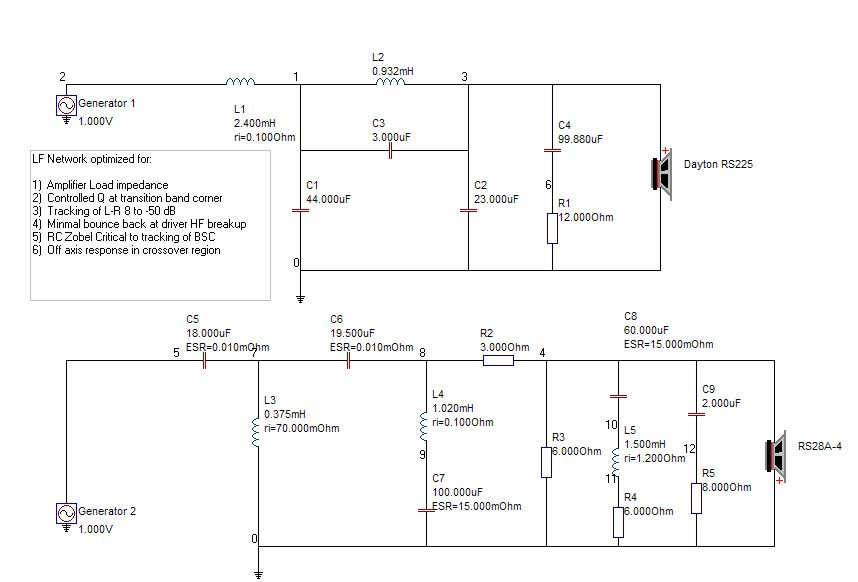
(Mark K’s Design using elaborate passive components)
Dayton introduce the new RS225P and RST28A with better specifications. From my impression of the RS225+RS28, I decided to go the Active route with modern drivers. Afterall, the KEF T27 and B200 are already 45 years old!
For Boxsim, I put in every parameter as accurate as I could to use the Dayton RS225P and RST28A into the KEF 104 cabinet for simulation. The simulation took a long time for many iterations, and I was not happy with the results. Finally, I decided to go active.
The following compares the Active option simulation VS Passive Circuit response:
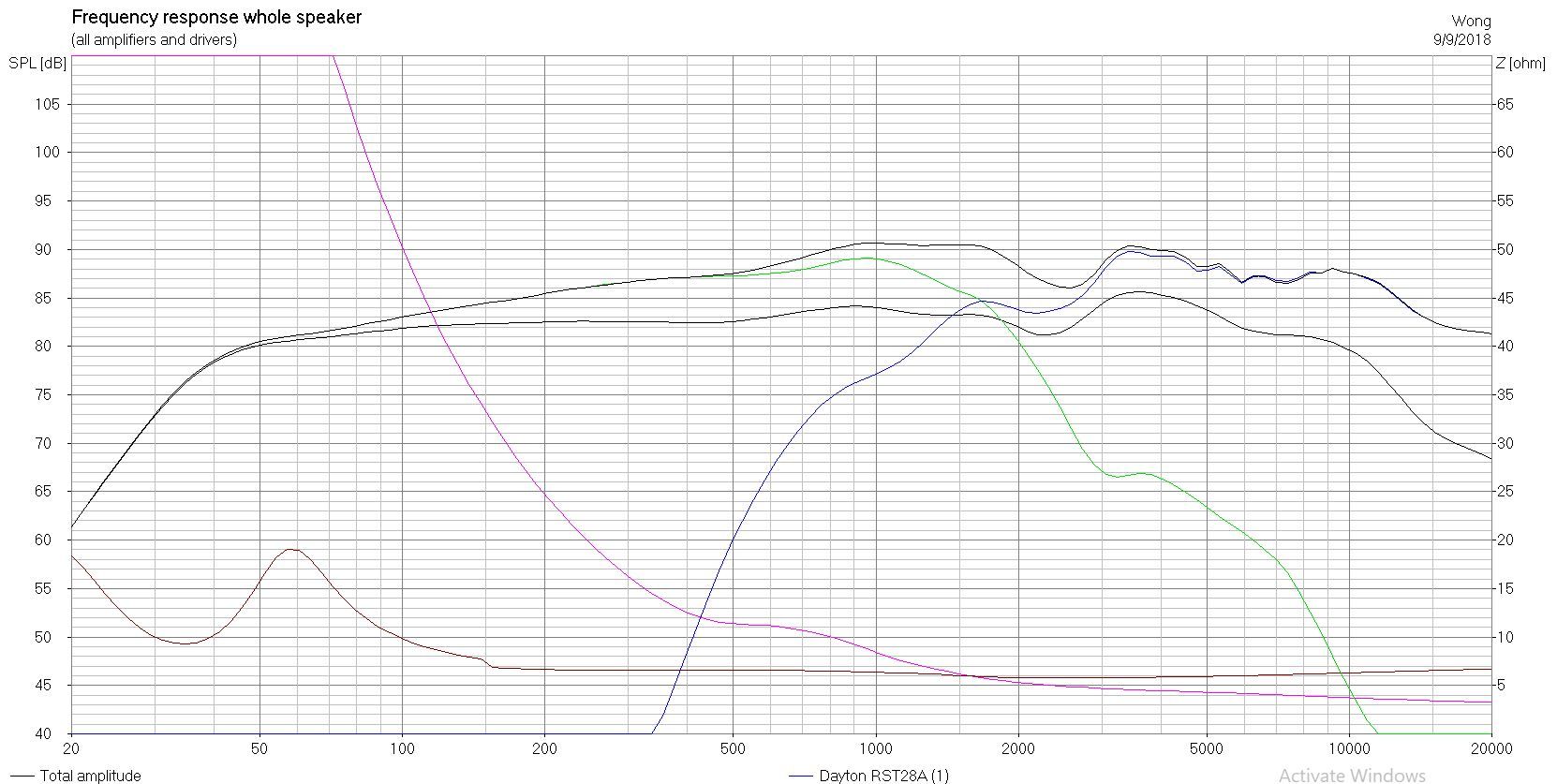
Active Two Amplfiers - 18db/Oct and some driver compensation.
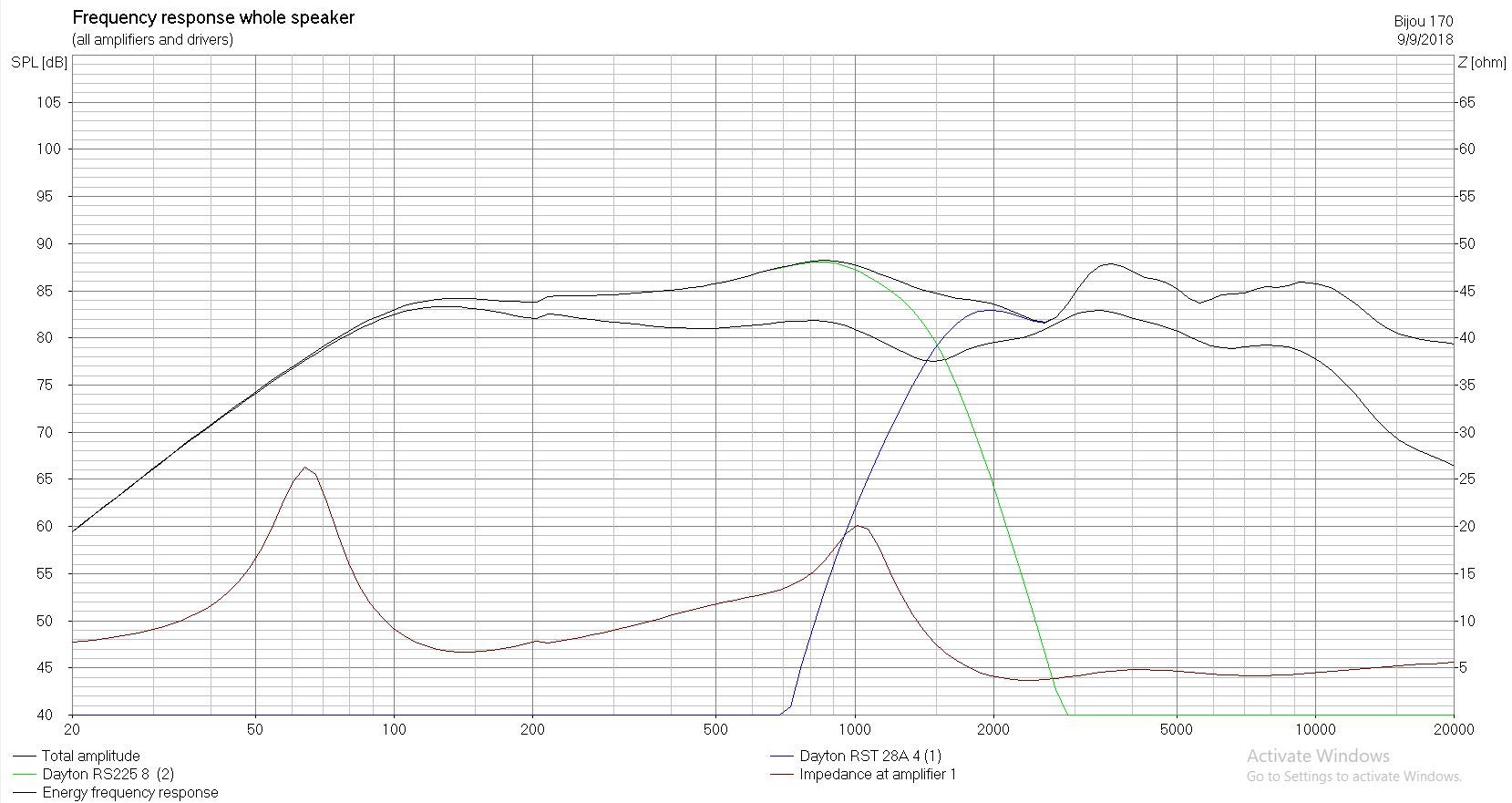
Massive Passive Components
The Active approach has a more flat and easy to manage impedance change. The passive components has a challenge of Impedance drop to below 3 ohms level if not careful. Active also means less demand on the amplifier.
To take in the Dayton 8 in, it was back to the rework of the cabinet again! With wood putty, I was able to make a cutout suitable for any modern 8 in drivers that uses a ~190mm cut out. This took another month, and not to damage the already done wood veneer. I hated this part of the project  . .
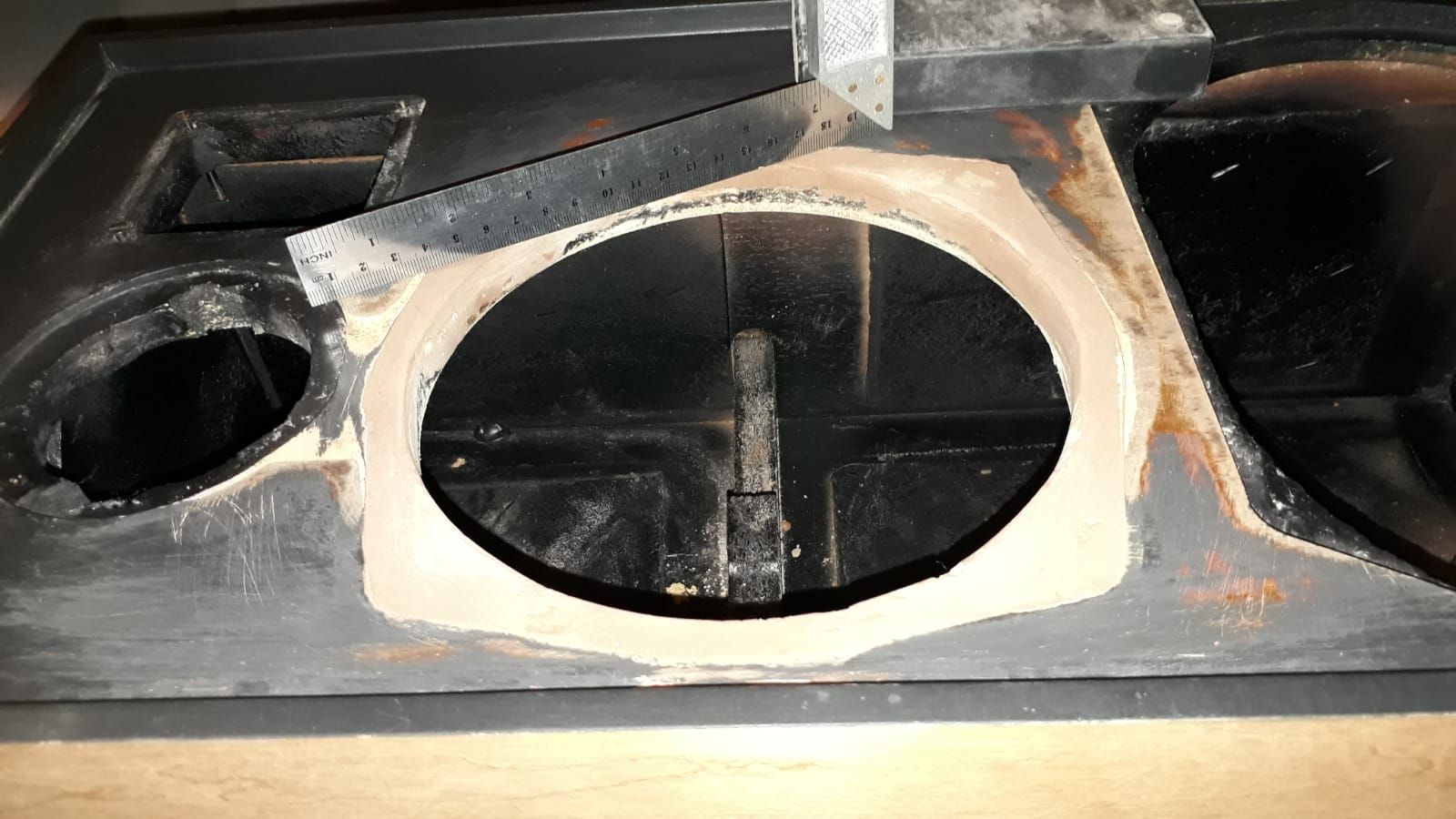
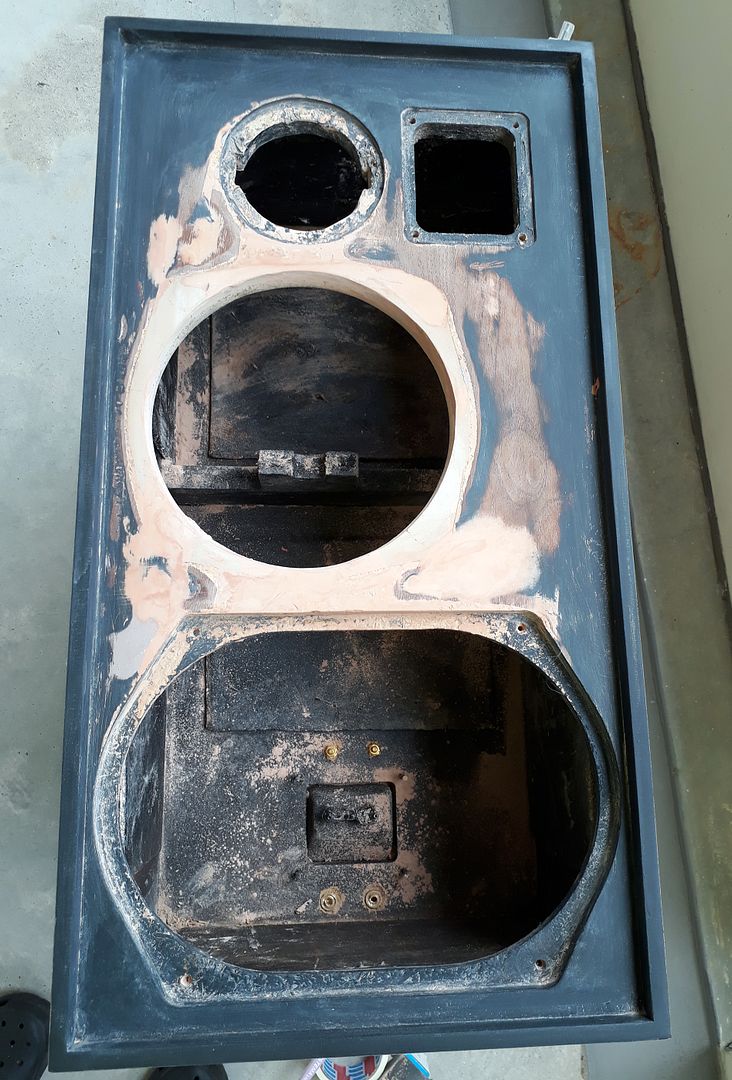
Finally, I decided to make the new KEF looks like something special. Nostalgic with 1970s feel, but with a modern standard in performance.
After weekss of struggling, the cabinet was ready. I polished the front face and resprayed the front with creamy yellow, to give it a nostalgic feel. The amount of putty, sanding and reiterations was painful. The cut out for the tweeter has to be reworked to house the RST28A. Due to the very bad condition of the front cabinet section , I had to put in wood brace to back the speaker anchoring locations behind the drivers.
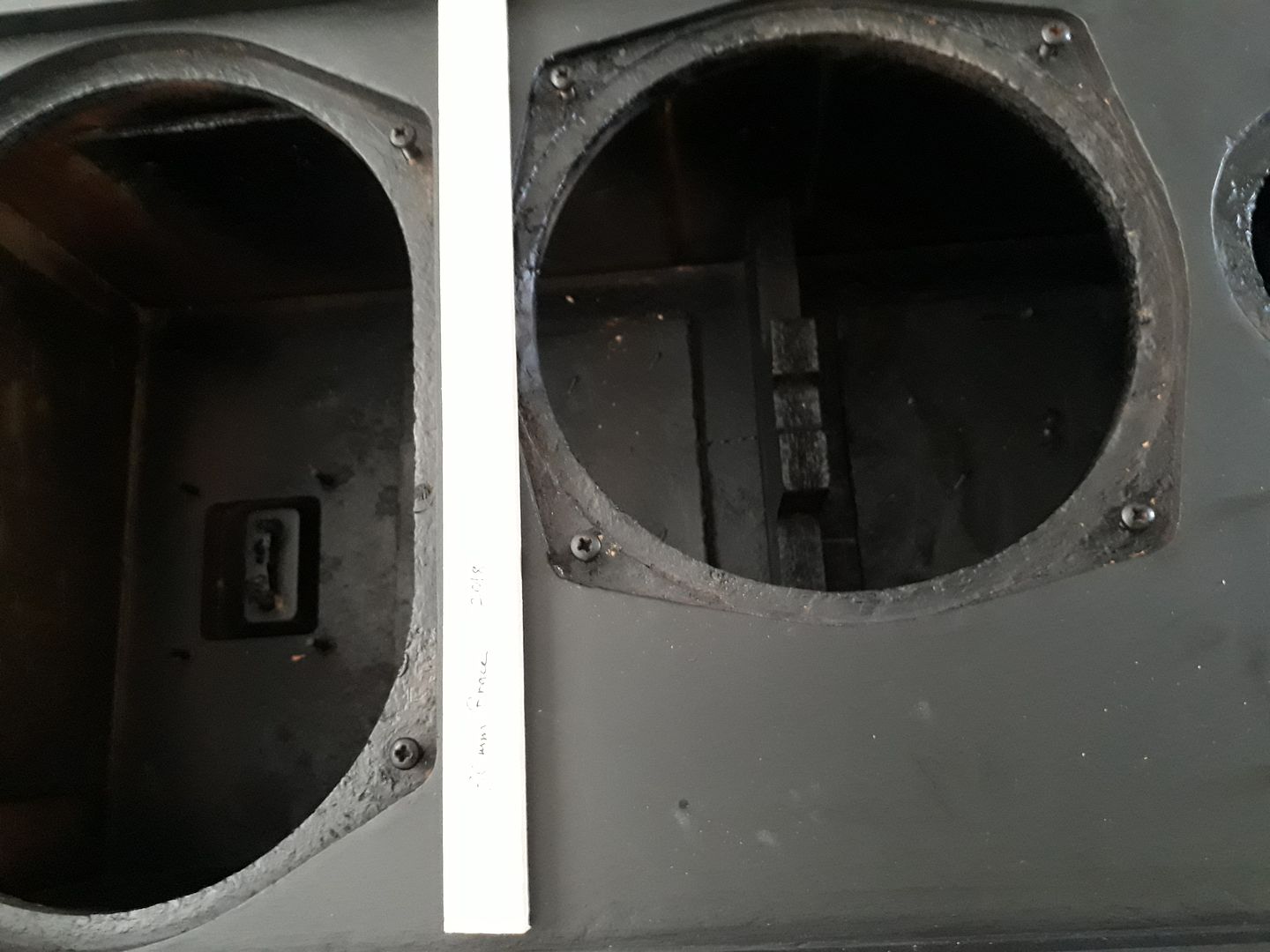
The speaker was restuffed with sponge as per the original stuffing. The same type of sponge stuffing was used in old Tangent speakers. Everything was all set.
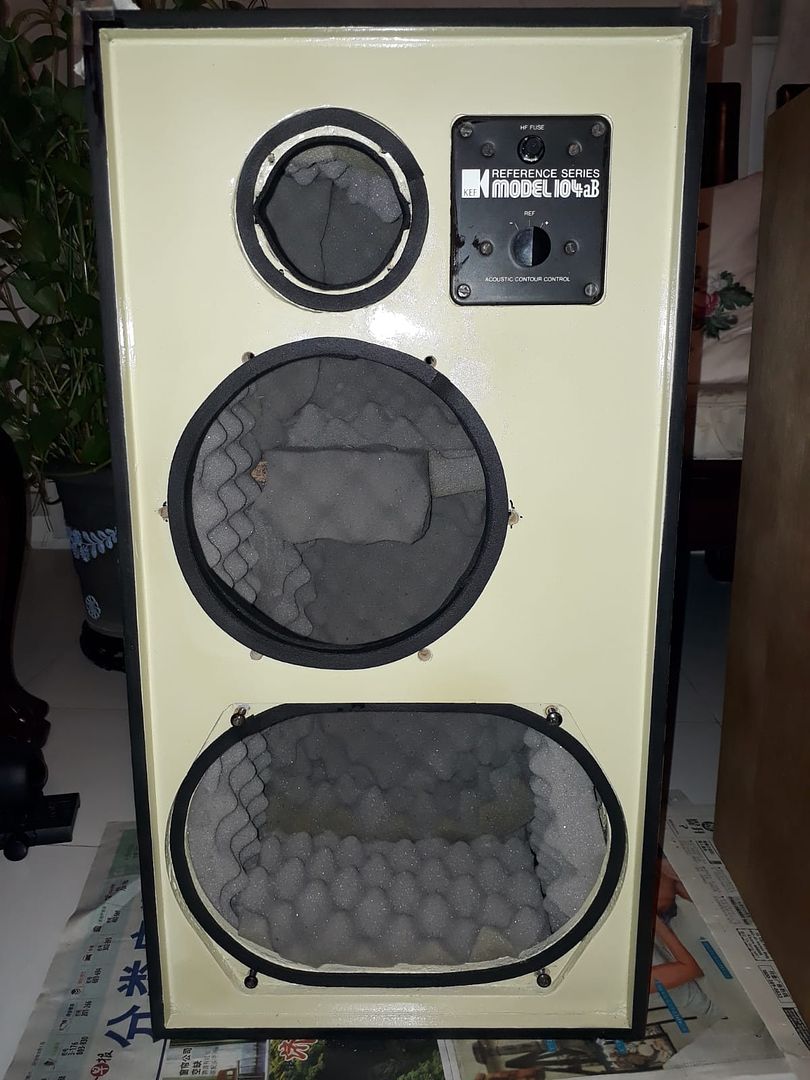
FINAL DRIVE!
Dayton RS225P and Dayton RST28A
There are already a lot of discussion on the two Dayton drivers in the Parts Express site, so I will not go into too much details. Basically, the RS225P exhibits break ups at 3khz and beyond, and have a dip at around 1khz. The Dayton spec looks rather similar to the SP1039, vaguely.
The RST28A has a low resonance at 775hz and response starts to drop after 15khz like the T27. The response is good, except a dip at 2khz. The T27 boast a response to beyond 20khz, but it struggles to go below 2khz.
The new combination RS225P and RST28A will have to be crossed at around or below 2khz, and whether to use BW or LR can only be decided after measurements.
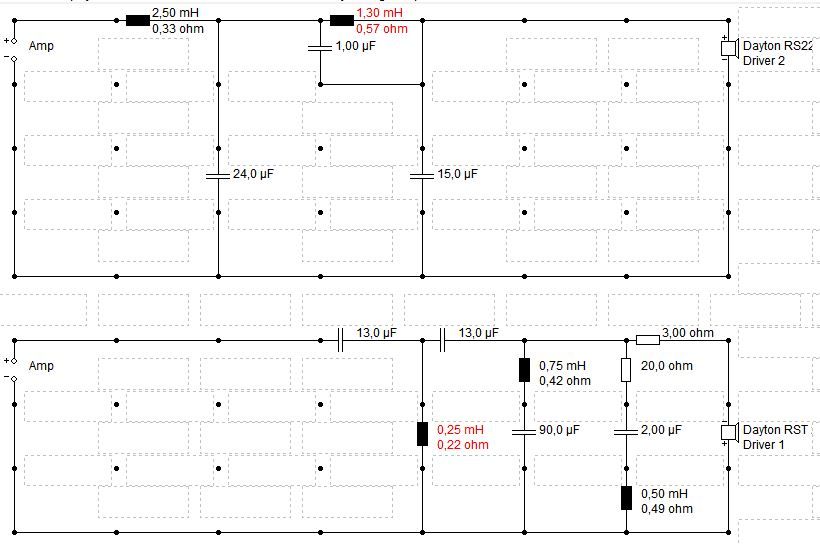
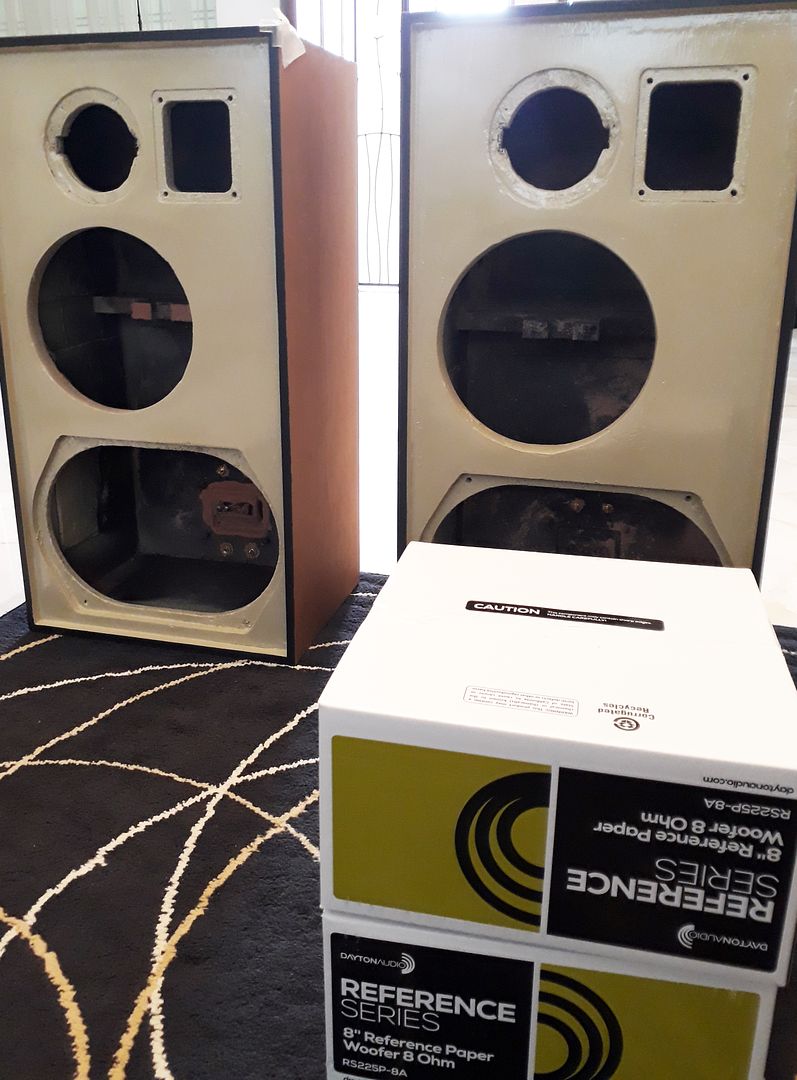
MiniDSP Workflow
The internet is packed with much information on how to do a two way speaker crossover design using MiniDSP. Many are confusing. I also cannot understand how people design a crossover without understanding the behaviour of individual drivers, and not done any simulation.
Here is the workflow I followed:
Decide on the Tweeter and Woofer - they should have fairly flat frequency responses
Obtain the specification, graphs, ZMA/FRD information
Run simulations using Boxsim or other Simulation to understand how the drivers behave:
Any compensation needed to address the peaks/dips
How the impedance drop or rise in the working band ( less than 4 ohms is bad)
The optimal crossover frequency and type of filter (simpler is better)
4. Familiar with use of MiniDSP, Umik USB microphone and REW room measurement methods
5. Set up and calibrate the Microphone, computer and software, and understand measurement methods
6. Measure the response of the woofer:
Use DSP settings to shelf out the 3khz and above regions
Do not adjust the regions below 400hz as these could be room mode
7. Measure the response of the tweeter:
Introduce a deep notch at the Fr = 775hz to prevent resonance.
Smooth out the uneven response of the tweeter (add 2 db boost at 2khz dip)
8. Although the crossover is active, it does not mean there are no more passive components for the drivers. Put in Zobel to compensate the drivers. Put in at least 20-30uF to isolate the tweeter from the amplifier.
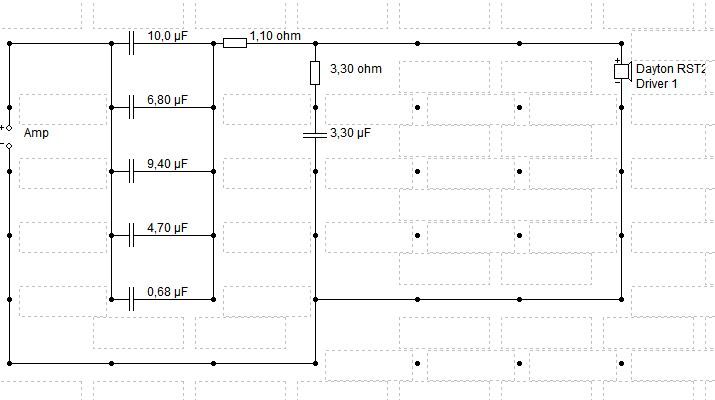
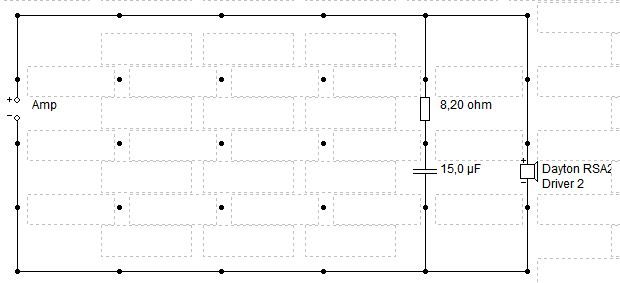

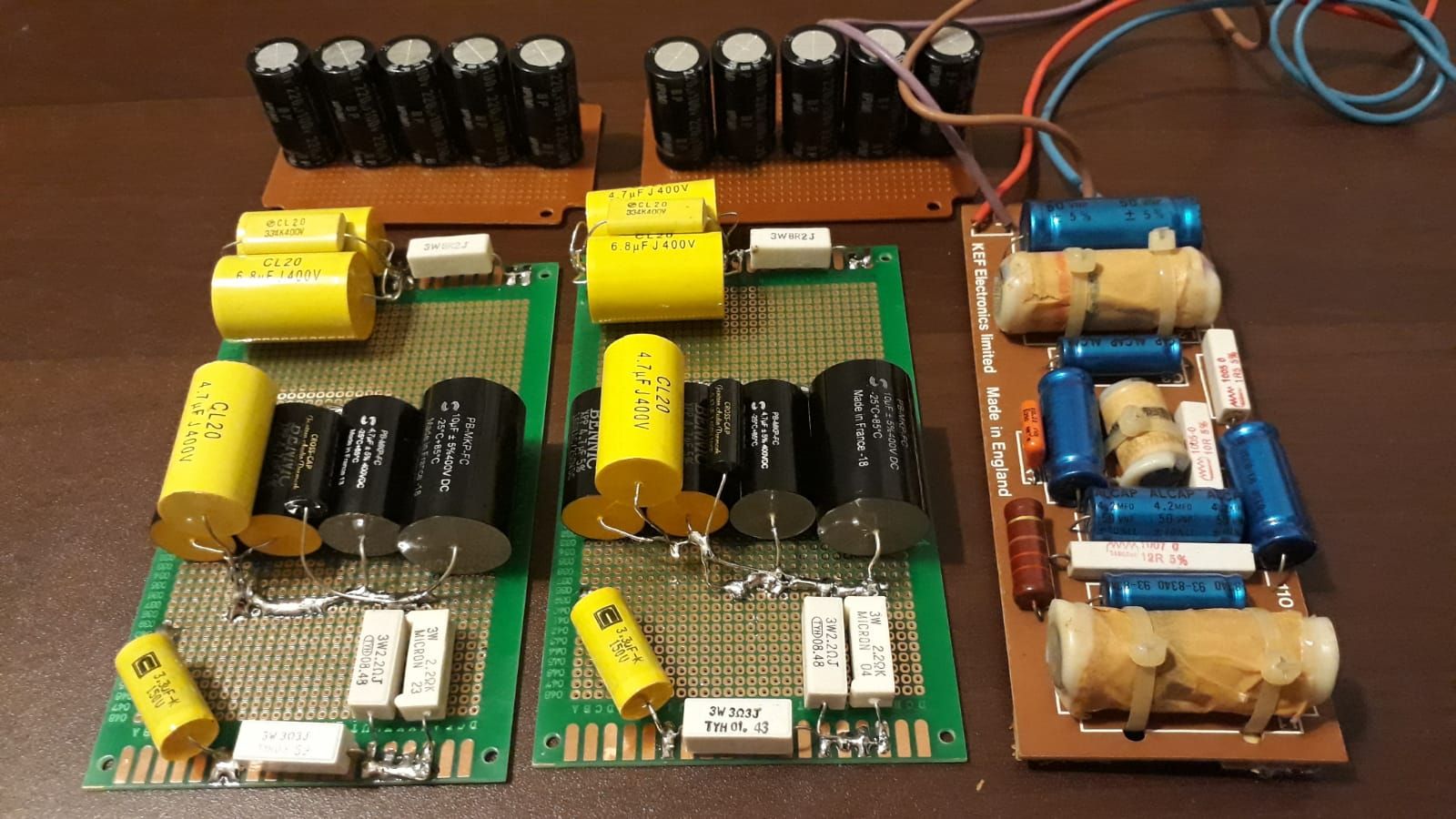
(This is NOT a crossover. It is the Zobel for both woofer and tweeter, and 30uf to isolate the tweeter. The old KEF Carlton III crossover board for illustration)
When the driver are linearized, then there is no need to use complex filter configuration to address the drivers. I found that the 3rd order Butterworth near 1.2khz for the tweeter, nearly 2 khz 2nd order Butterworth for the woofer may work. There is no need to replicate the complex steep attenuations done using passive components. (the cost of the coils + caps is more than the drivers and perhaps the MiniDSP 2/4 !)
Measurement done in a fairly big room with Umik 1 at 1m was encouraging.

The original KEF 104aB with passive components 3rd Order Butterworth crossover is within specifications. 50-20000khz +/-3dB:
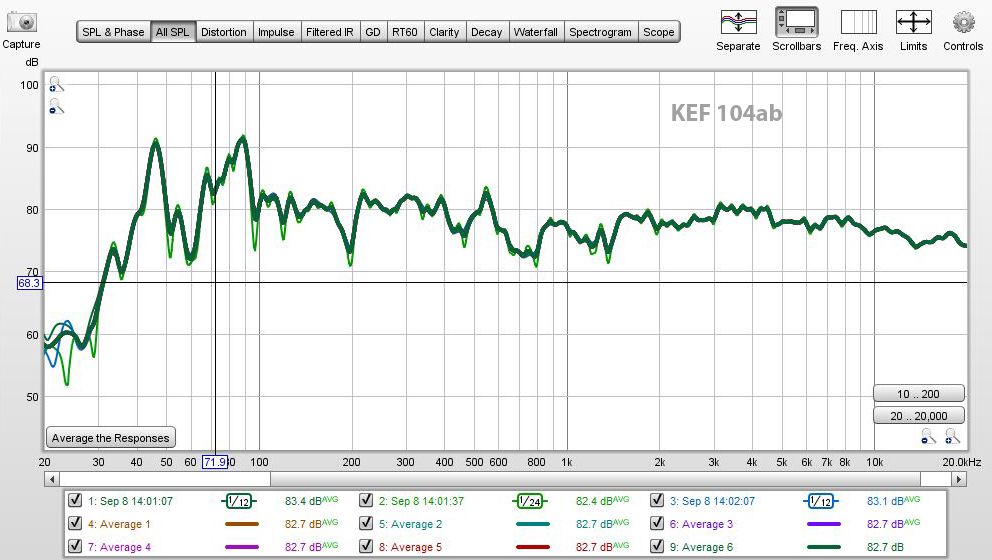
The new KEF 104aB with Dayton drivers. I have done some adjustments on the tweeter. The 3rd order Butterworth filter works and integrate well. It looks more consistent than the KEF 104 drivers:
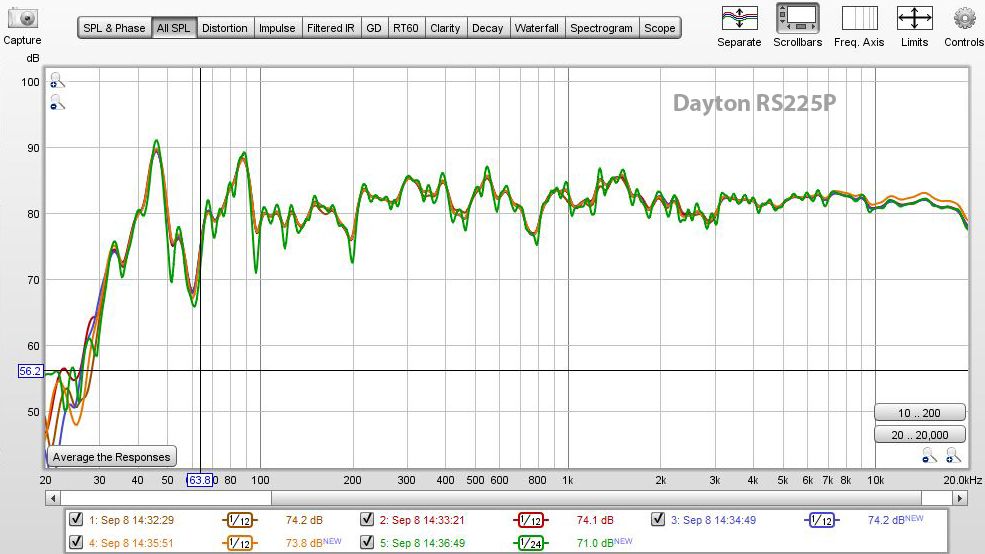
How does it sound?
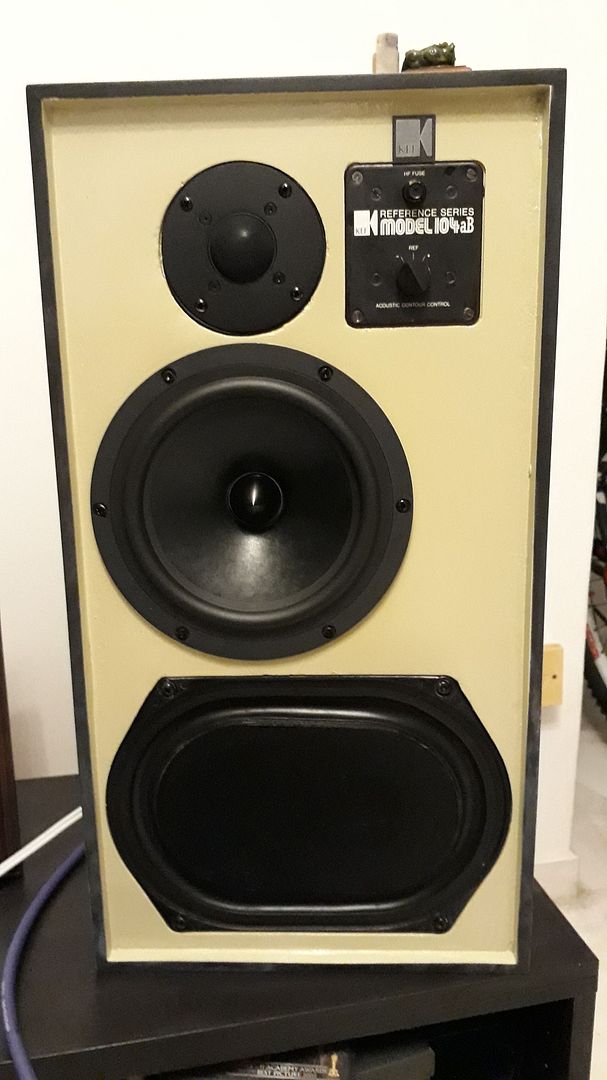
By measurement the ABR B139 worked with the RS225P with no issue. Bass was more tight and much better controlled. It does not deviate too much from the original KEF 104ab’s graph. But it does have a lot more details and the high frequency section is very comfortable. Now I can enjoy jazz music a lot more. The alu tweeters has an advantage when playing jazz.
2. I use two Pioneer A300 to bi amp the speakers. The settings are adjusted using Pink noise and measurement. The speaker sound very detailed, transparent and very modern. My next step will use the 4 X 100W Class D amplifier to drive the 4 drivers. This is another step to simplify the system. The MiniDSP can sit inside the same enclosure for the class D amp.
3. The original KEF 104ab sound more ‘bloated’ and have less control than the Dayton set. Also, there are not much musical details or timbre by comparison. (not bad for a 1970’s set still working!)
4. The speaker cabinet needs to be sturdy and strong, with proper damping
I am pleased that the final result is what I wanted. A speaker that looks nice, sounds great. The DSP Active crossover workflow is easier than passive components. It also eliminates the black art associated with the coils and caps design.
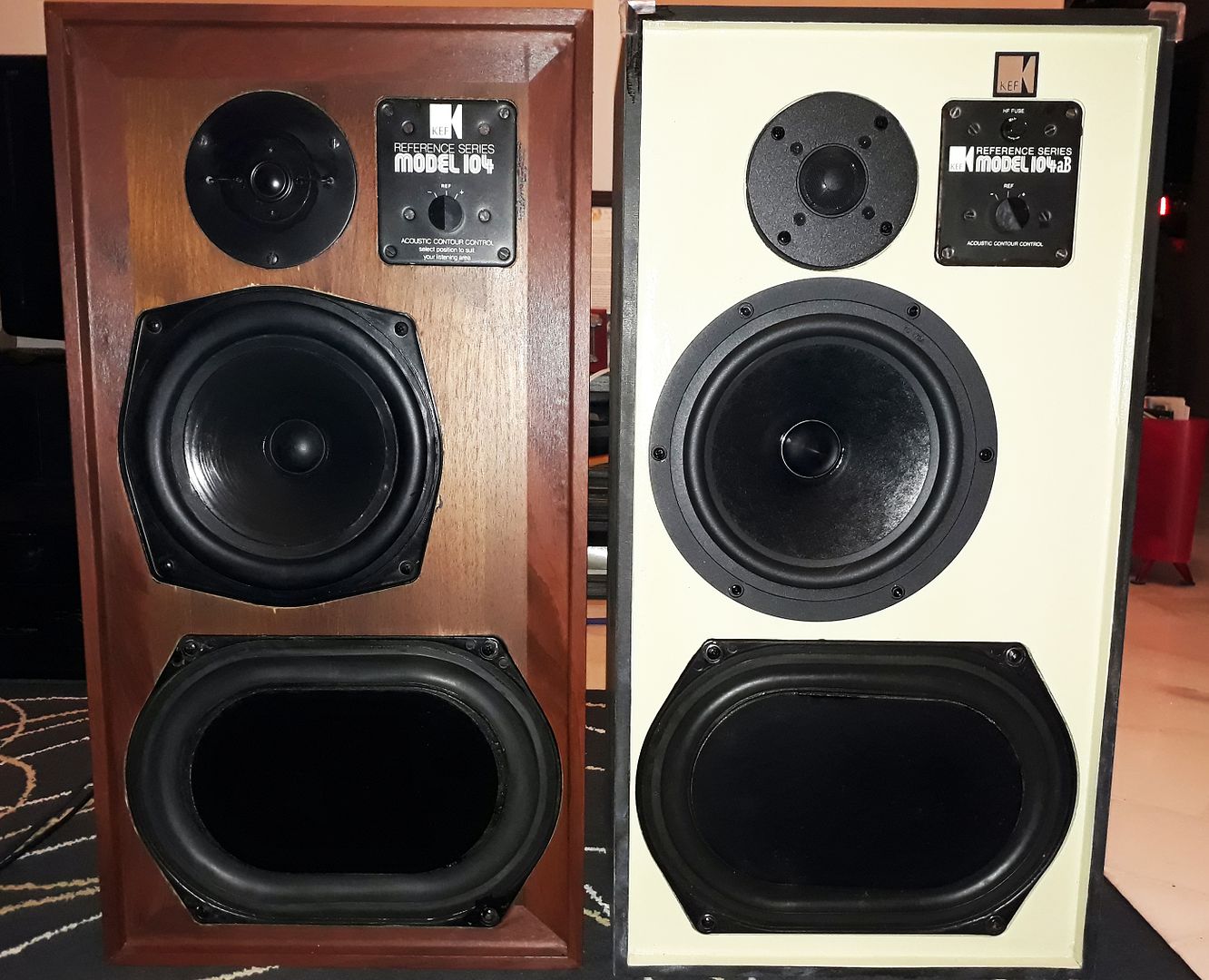 |
|
| Back to top |
|
 |
T.O. Chef
Senior Contributor 100+
Joined: 31 Aug 2007
Posts: 187
Location: Toronto Canada
|
 Posted: Fri Sep 14, 2018 8:48 pm Post subject: Posted: Fri Sep 14, 2018 8:48 pm Post subject: |
 |
|
Wow. Lots and Lots of work.
But like they say .... It's not so much the destination as the journey.
The cab's sure look great!
_________________
Music is food for the soul. |
|
| Back to top |
|
 |
Nimo_jon
Intermediate Contributor 25+

Joined: 21 Feb 2011
Posts: 48
Location: Singapore
|
 Posted: Sun Sep 16, 2018 7:58 am Post subject: Posted: Sun Sep 16, 2018 7:58 am Post subject: |
 |
|
| T.O. Chef wrote: | Wow. Lots and Lots of work.
But like they say .... It's not so much the destination as the journey.
The cab's sure look great! |
Thanks Chef! This project dragged a number of years. Recently there are a lot of new tech upgrades for Speaker Building. Still, the fundamentals remain. I have learned a lot from this site, and also from KEF speakers. Thank you. If not for the shortage of B200, I could had rebuilt the KEF 104ab as it was but with active cross over using op-amp circuit. The MiniDSP offers a lot of flexibility.
My new project is a clone KEF 105.2/4. The top unit will use a LS3/5a style cabinet using a top of range tweeter and a good 5in driver. Crossing at 2500 hz for mid and high. ( I am still thinking of using Seas or Aurum Cantus drivers to duplicate the KEF magic)
The bottom section will be a 90 liters box (as KEF originally designed) housing the bass drivers. With the flexibility of DSP and also availability of many good drivers, I will be using a 8in Peerless bass to take care of 80-350/400hz for upper bass, and a 12in Peerless unit to take care of the 20-80hz region.
The KEF 105.4 uses twin bass drivers. This is where the inspiration came from. I am very familiar with the KEF 105.2, but have not heard the 105.4 before.
I should be able to complete the KEF 1/5.2/4 before this Christmas.  |
|
| Back to top |
|
 |
audiolabtower
VIP Contributor 500+
Joined: 06 Jan 2009
Posts: 686
|
 Posted: Sun Sep 16, 2018 3:55 pm Post subject: Posted: Sun Sep 16, 2018 3:55 pm Post subject: |
 |
|
| Wow again, to rebuild the cutouts clean from that bad wood, what a job! Were you not tempted to replace the baffles, maybe put the drivers down a centre line? |
|
| Back to top |
|
 |
Nimo_jon
Intermediate Contributor 25+

Joined: 21 Feb 2011
Posts: 48
Location: Singapore
|
 Posted: Tue Sep 18, 2018 10:32 am Post subject: Posted: Tue Sep 18, 2018 10:32 am Post subject: |
 |
|
Hi, thanks indeed there were a lot of work.
Repeated filler application, sanding down, and refill again. Replacing the baffle was not considered because it is very difficult to do the cut out for the B139 and also the nameplate next to the tweeters...
The pair were built around 1975 or 1976.
As the speaker breaks in, it sounds much better than a similar 28mm tweeter/ 8inch mid two way setup. Kudos to KEF on the ABR design. |
|
| Back to top |
|
 |
|
|
You cannot post new topics in this forum
You cannot reply to topics in this forum
You cannot edit your posts in this forum
You cannot delete your posts in this forum
You cannot vote in polls in this forum
|
Powered by phpBB © 2001, 2005 phpBB Group
|






























